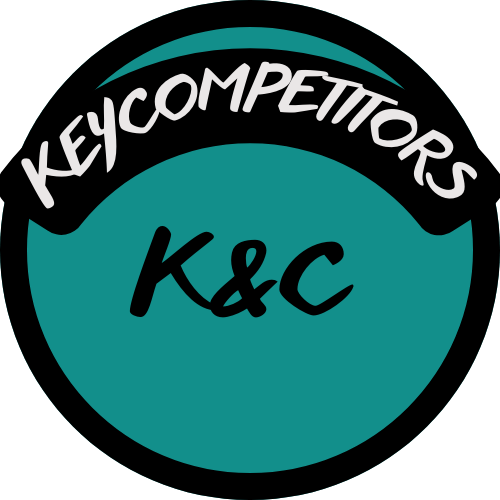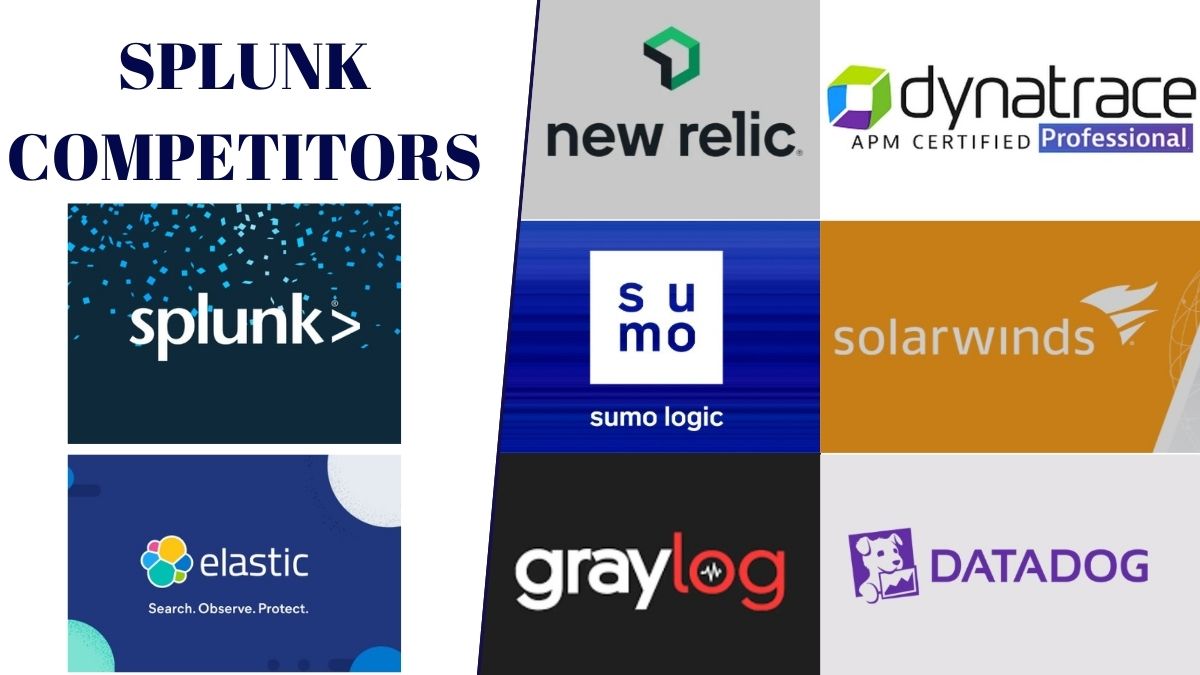Understanding The Market
In today’s data-driven world, organizations rely heavily on platforms that help them make sense of their data, monitor IT operations, and ensure security. Splunk, a leader in observability and security information and event management (SIEM), has become a go-to solution for many businesses. However, the market is competitive, with numerous Splunk competitors offering innovative features, cost-effective solutions, and unique advantages.
This article explores the competitive landscape of observability and SIEM platforms, highlighting the strengths and weaknesses of Splunk competitors. Whether you’re evaluating solutions for IT operations, security monitoring, or business analytics, understanding these alternatives will help you make informed decisions.
Splunk and The Data-Driven Decision Era
We live in an era where data is the backbone of decision-making. From IT operations to security monitoring, businesses need tools that can collect, index, and analyze machine-generated data. Splunk has established itself as a major player in this space, offering powerful log management, SIEM capabilities, and observability tools.
However, the market is dynamic, and Splunk competitors are constantly innovating to meet the evolving needs of businesses. Cloud-native platforms, open-source solutions, and AI-powered tools are reshaping the competitive landscape, giving organizations more options than ever before.
Let’s dive deeper into the key players competing with Splunk and see how they stack up.
Key Splunk Competitors
Several companies compete with Splunk in the observability and SIEM market. Here’s a closer look at the most prominent Splunk competitors, categorized by their primary areas of focus:
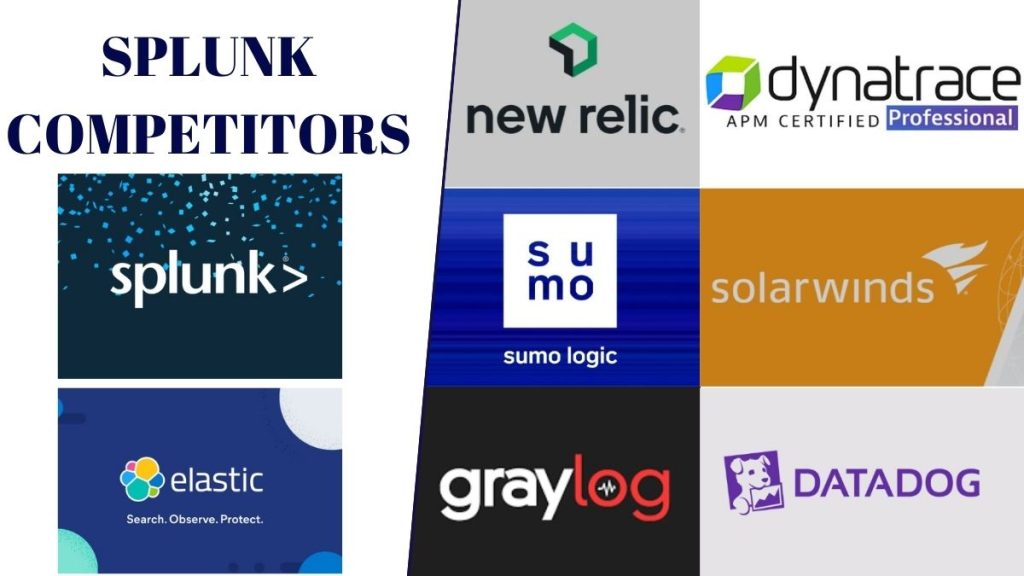
Company Overview
| Feature | Splunk | Datadog | Elastic | Sumo Logic | Dynatrace | New Relic | SolarWinds | Graylog |
| Founded | 2003 | 2010 | 2012 | 2010 | 2005 | 2008 | 1999 | 2009 |
| Founder(s) | Michael Baum, Rob Das, Erik Swan | Olivier Pomel & Alexis Lê-Quôc | Shay Banon | Christian Beedgen, Erez Rusovsky, Ori Pomerantz, and Vladislav Vedeneev | Bernd Greifeneder | Lew Cirne | Donald Yonce & David Packard | Lennart Koopmann |
| Focus | Log management, SIEM, security analytics, observability | Monitoring and observability for cloud applications | Enterprise search, analytics, observability | Cloud-native log management and observability | Observability, AIOps, and automation | Observability for software performance | IT operations management and monitoring | Open-source log management and SIEM |
| Key Features | Log management, SIEM, enterprise security, IT operations, business analytics | Infrastructure monitoring, application performance monitoring (APM), log management, security monitoring | Search, analytics, data visualization, application search, enterprise search | Log management, infrastructure monitoring, security analytics, real user monitoring (RUM) | APM, infrastructure monitoring, log management, digital experience monitoring, AIOps | APM, infrastructure monitoring, log management, synthetic monitoring | Network monitoring, IT operations management | Log management, SIEM, open-source flexibility |
Market Share (Approximate)
The market share of Splunk competitors varies depending on the specific segment (e.g., SIEM, APM, log management). Here’s a general overview:
- Splunk: A dominant player in SIEM and log management, with a strong presence in enterprise environments.
- Datadog: Rapidly growing in the cloud-native observability market, especially among DevOps teams.
- Elastic: Leading in the open-source search and analytics space, with increasing adoption for observability.
- Dynatrace: Known for AI-powered observability and AIOps, particularly among large enterprises.
- New Relic: Competes across various monitoring areas, with a comprehensive observability platform.
- Sumo Logic: A strong contender in cloud-native log management and SIEM.
- SolarWinds: Popular for IT operations management and network monitoring.
- Graylog: Gaining traction as an open-source alternative for log management and SIEM.
Product Range of The Splunk Competitors
Each Splunk competitor offers a unique set of products and features tailored to specific use cases.
- Splunk: Splunk Enterprise, Splunk Cloud Platform, Splunk Enterprise Security, Splunk IT Service Intelligence (ITSI), Splunk Observability Cloud.
- Datadog: Infrastructure monitoring, application performance monitoring (APM), log management, security monitoring, synthetic monitoring, network monitoring.
- Elastic: Elasticsearch, Kibana, Beats, Logstash, APM, SIEM.
- Dynatrace: Dynatrace platform (observability, AIOps, application security, digital experience monitoring).
- New Relic: New Relic One (observability platform), APM, infrastructure monitoring, log management, digital experience monitoring.
- Sumo Logic: Cloud SIEM, cloud log management, cloud monitoring.
- SolarWinds: Network monitoring, IT operations management, server monitoring.
- Graylog: Open-source log management, SIEM, real-time log analysis.
Strengths and Weaknesses
Let’s explore the strengths and weaknesses of Splunk competitors:
Splunk
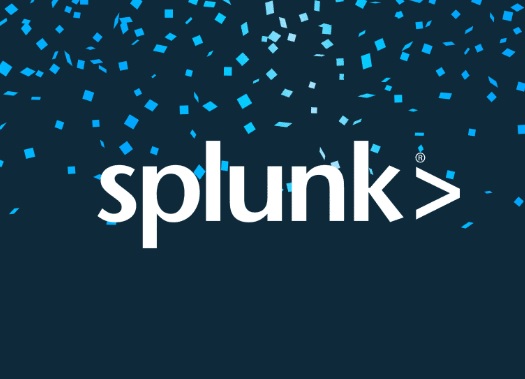
- Strengths: Powerful log management and SIEM capabilities, flexible platform, and a large ecosystem of integrations.
- Weaknesses: Expensive, resource-intensive, and can be complex to manage.
Datadog
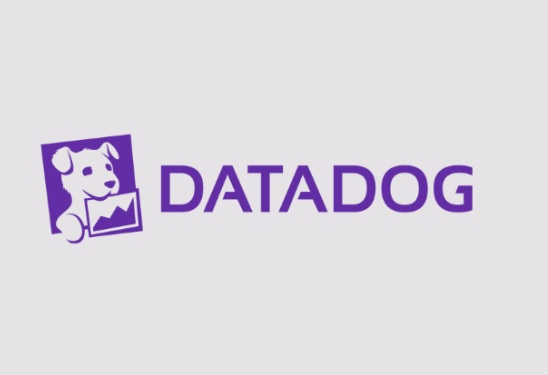
- Strengths: Ease of use, excellent visualizations, and strong integrations with cloud platforms.
- Weaknesses: Expensive at scale, and advanced features may require customization.
Elastic
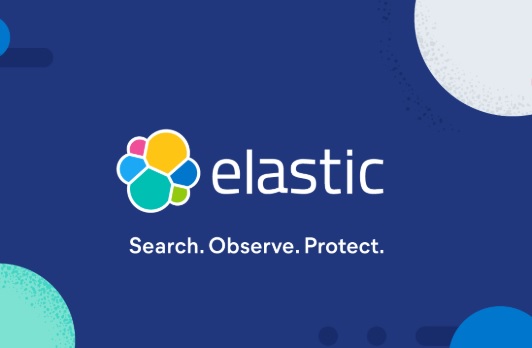
- Strengths: Open-source flexibility, scalable search engine, and strong analytics capabilities.
- Weaknesses: Requires technical expertise and can be complex to configure.
Dynatrace
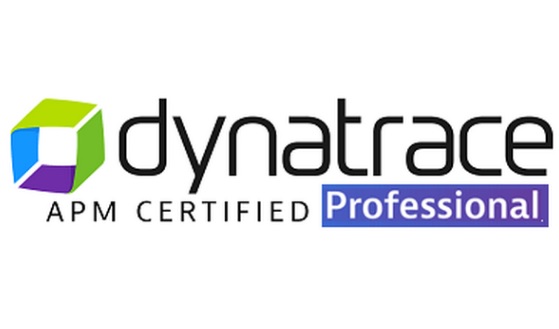
- Strengths: AI-powered automation, root cause analysis, and unified observability platform.
- Weaknesses: Higher cost and requires expertise for implementation.
New Relic
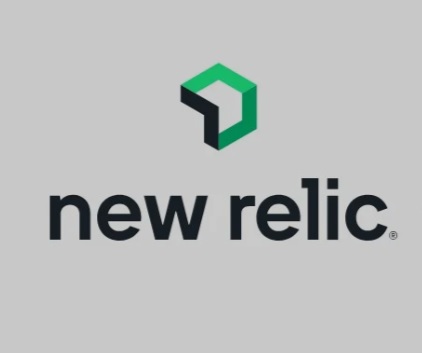
- Strengths: Comprehensive observability platform and strong focus on application performance monitoring.
- Weaknesses: Pricing can be confusing, and navigation across products may feel complex.
Sumo Logic
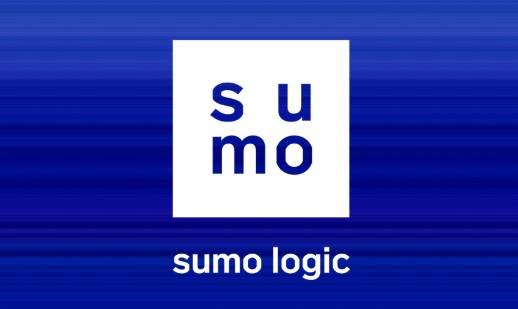
- Strengths: Cloud-native log management and SIEM, scalable platform, and security analytics focus.
- Weaknesses: Less versatile for non-security use cases.
SolarWinds

- Strengths: Affordable IT operations management tools and strong network monitoring capabilities.
- Weaknesses: Limited observability features compared to Splunk competitors.
Graylog
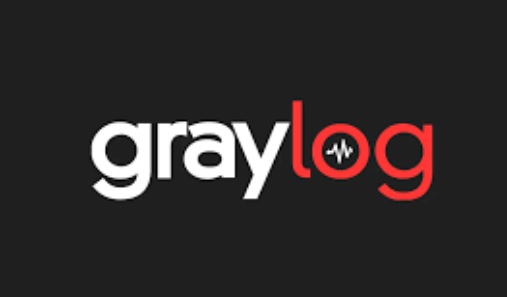
- Strengths: Open-source flexibility, cost-effectiveness, and real-time log analysis.
- Weaknesses: Smaller community and fewer enterprise-grade features.
Investments and Future Plans
- Splunk: Investing heavily in cloud-native observability, security automation, and AI-driven analytics.
- Datadog: Expanding its observability platform and enhancing AI capabilities.
- Elastic: Improving its SIEM capabilities and focusing on cloud-native deployments.
- Dynatrace: Advancing its AIOps platform and application security monitoring.
- New Relic: Enhancing its user experience and adding AI-powered performance monitoring tools.
- Sumo Logic: Developing advanced analytics and focusing on security automation.
- SolarWinds: Strengthening its IT operations management and cloud monitoring features.
- Graylog: Expanding enterprise features while maintaining its open-source roots.
Head-to-Head Comparison Between The Splunk Alternatives
- Splunk vs. Datadog: Splunk excels in SIEM and log management, while Datadog leads in cloud-native observability.
- Splunk vs. Elastic: Splunk is a commercial platform with enterprise features, while Elastic offers open-source flexibility.
- Dynatrace vs. New Relic: Dynatrace emphasizes AI-powered automation, while New Relic focuses on application performance monitoring.
- Splunk vs. SolarWinds: SolarWinds is ideal for IT operations management, while Splunk offers more advanced analytics and security monitoring.
Consumer Experiences and Preferences
- Log Management: Splunk and Elastic are top choices for robust log management.
- APM: Datadog and New Relic are popular for application performance monitoring.
- SIEM: Splunk and Sumo Logic lead the way in security information and event management.
- Ease of Use: Datadog is praised for its user-friendly interface, while Elastic offers flexibility for technical users.
- Scalability: Elastic stands out for handling large data volumes, while Splunk offers enterprise-grade scalability.
Conclusion
The observability and SIEM market is brimming with competition, and Splunk competitors are constantly innovating to meet the needs of modern businesses. Whether it’s Datadog’s cloud-native capabilities, Elastic’s open-source flexibility, or Dynatrace’s AI-powered automation, each competitor brings something unique to the table.
Choosing the right platform depends on your organization’s size, budget, and priorities. Splunk remains a dominant force, but exploring alternatives like Datadog, Elastic, Dynatrace, and others can help you find the perfect solution for your IT operations, security monitoring, and business analytics needs.
By understanding the strengths and weaknesses of Splunk competitors, you’ll be better equipped to make data-driven decisions that empower your business and drive success.
FAQs About Splunk Competitors
Choosing the right platform for data analysis, observability, and security can feel like a daunting task, especially with so many options available. Splunk has long been a leader in this space, but there are plenty of Splunk competitors offering innovative features, cost-effective solutions, and unique advantages. To help you navigate the competitive landscape, here’s a friendly FAQ covering everything you need to know about Splunk competitors—from their strengths and weaknesses to how they compare with Splunk.
Who are Splunk’s main competitors?
Splunk operates in a highly competitive market, with numerous players vying for attention in observability, log management, and security information and event management (SIEM). Some of the most prominent Splunk competitors include:
- Datadog
- Elastic
- Sumo Logic
- Dynatrace
- New Relic
- SolarWinds
- Graylog
Each competitor brings its own strengths to the table, whether it’s cloud-native observability, open-source flexibility, or AI-powered automation.
What makes Splunk unique compared to its competitors?
Splunk is widely recognized for its powerful log management, SIEM capabilities, and enterprise-grade observability tools. It’s a flexible platform that can handle large volumes of machine-generated data, making it ideal for security monitoring, IT operations, and business analytics.
However, Splunk can be resource-intensive and expensive, which is why many organizations explore alternatives. Competitors like Datadog and Elastic focus on ease of use and scalability, while Dynatrace emphasizes AI-powered automation.
How does Datadog compare to Splunk?
Datadog is one of the most popular Splunk competitors, particularly in the cloud-native observability space.
- Strengths: Datadog is praised for its user-friendly interface, excellent visualizations, and seamless integrations with cloud platforms like AWS and Azure. It offers a wide range of features, including application performance monitoring (APM) and synthetic monitoring.
- Weaknesses: While Datadog is easy to use, it can become expensive at scale, and some advanced features may require customization.
If your organization prioritizes observability for cloud applications, Datadog is a strong contender. However, Splunk’s SIEM capabilities make it a better choice for security-focused use cases.
Is Elastic a good alternative to Splunk?
Absolutely! Elastic is a favorite among organizations looking for an open-source solution.
- Strengths: Elastic offers flexibility and scalability, thanks to its powerful tools like Elasticsearch, Kibana, and Logstash. It’s ideal for search, analytics, and log management, with growing capabilities in observability and SIEM.
- Weaknesses: Elastic requires technical expertise to set up and manage, and it can be complex to configure for specific use cases.
If your team has the technical skills to manage an open-source platform, Elastic can be a cost-effective alternative to Splunk.
How does Sumo Logic compare to Splunk?
Sumo Logic is another strong competitor, particularly in cloud-native log management and SIEM.
- Strengths: Sumo Logic offers a scalable platform with a focus on security analytics. It’s easy to deploy and integrates well with modern cloud environments.
- Weaknesses: While Sumo Logic excels in security use cases, it may not be as versatile as Splunk for IT operations or business analytics.
If your organization is looking for a cloud-native SIEM solution, Sumo Logic is worth considering. For broader use cases, Splunk might be a better fit.
What sets Dynatrace apart from Splunk?
Dynatrace is a leader in AI-powered observability and automation, making it one of the most innovative Splunk competitors.
- Strengths: Dynatrace’s platform uses AI to deliver root cause analysis, automate monitoring tasks, and provide actionable insights. It’s particularly strong in application performance monitoring (APM) and digital experience monitoring.
- Weaknesses: Dynatrace can be more expensive than other competitors, and its implementation may require specialized expertise.
If your organization values AI-powered automation and advanced analytics, Dynatrace is a great alternative to Splunk.
How does New Relic compare to Splunk?
New Relic is a well-established player in the observability market, with a strong focus on application performance monitoring (APM).
- Strengths: New Relic offers a comprehensive observability platform that includes APM, infrastructure monitoring, and digital experience monitoring. It’s known for its detailed insights into software performance.
- Weaknesses: New Relic’s pricing can be confusing, and navigating its suite of products may feel overwhelming for new users.
If your organization prioritizes application performance monitoring, New Relic is a solid alternative to Splunk.
Are there open-source competitors to Splunk?
Yes! Open-source solutions like Elastic and Graylog are popular alternatives to Splunk.
- Elastic: Offers powerful search and analytics capabilities with tools like Elasticsearch and Kibana.
- Graylog: Focuses on log management and SIEM, providing real-time log analysis with open-source flexibility.
Open-source platforms can be cost-effective, but they require technical expertise for implementation and management.
What about SolarWinds as a Splunk competitor?
SolarWinds is best known for its IT operations management tools, making it a slightly different competitor to Splunk.
- Strengths: SolarWinds excels in network monitoring and IT operations management, offering affordable solutions for small to mid-sized businesses.
- Weaknesses: It lacks the advanced observability and SIEM features that Splunk provides.
If your organization focuses on IT infrastructure monitoring rather than security analytics, SolarWinds could be a good choice.
Which competitor is best for security monitoring?
Splunk is a leader in security monitoring, but several Splunk competitors also offer strong SIEM capabilities:
- Sumo Logic: Focuses on cloud-native SIEM with scalable security analytics.
- Elastic: Provides SIEM capabilities through its open-source platform.
- Graylog: Offers cost-effective SIEM features with real-time log analysis.
For organizations prioritizing security, Splunk remains a top choice. However, competitors like Sumo Logic and Elastic are gaining traction in this space.
Are Splunk competitors investing in new technologies?
Absolutely! The observability and SIEM market is constantly evolving, and Splunk competitors are leading the charge:
- Datadog: Expanding its observability platform and enhancing AI capabilities.
- Elastic: Improving its SIEM features and focusing on cloud-native deployments.
- Dynatrace: Advancing its AIOps platform and application security monitoring.
- Sumo Logic: Developing more advanced security analytics and automation tools.
These investments ensure that businesses have access to cutting-edge solutions for data analysis and security.
Which competitor is easiest to use?
Ease of use is a key consideration for many organizations. Here’s how Splunk competitors stack up:
- Datadog: Known for its intuitive interface and quick setup.
- Sumo Logic: Offers a user-friendly platform with seamless cloud integrations.
- Elastic: Provides flexibility but requires technical expertise.
If simplicity is your priority, Datadog and Sumo Logic are great alternatives to Splunk.
How do I choose between Splunk and its competitors?
Choosing the right platform depends on your organization’s priorities:
- Security Monitoring: Splunk, Sumo Logic, or Elastic.
- Application Performance Monitoring: Datadog or New Relic.
- Ease of Use: Datadog or Sumo Logic.
- Cost-Effectiveness: Elastic or Graylog.
Evaluate your needs, budget, and technical expertise to find the best fit.
Are there any emerging competitors to Splunk?
Yes! While established players dominate the market, emerging platforms like Logz.io (cloud-native observability built on open-source tools) are gaining traction. These solutions often combine the best of open-source flexibility and modern observability features.
Final Thoughts
The observability and SIEM market is crowded with strong Splunk competitors, each offering unique features and benefits. Whether you’re considering Datadog’s cloud-native capabilities, Elastic’s open-source flexibility, or Dynatrace’s AI-powered automation, there’s a solution tailored to your needs.
Splunk remains a leader, but exploring alternatives can help you find the perfect platform for your IT operations, security monitoring, and business analytics. Take your time, weigh your options, and choose a solution that empowers your organization to make smarter, data-driven decisions!
